市场资讯及洞察
%20(1).jpg)
亚洲
北京时间早间7时,韩国将公布三季度GDP初值,市场预计经济增速或继续温和修复。与此同时,深圳成为今日全球科技与产业创新的焦点:2025世界数字城市大会、深圳国际全触与显示展、广东国际机器人及智能装备发展大会及2025金融街论坛年会同时开幕,议题涵盖智慧城市、制造业升级与数字金融生态,体现中国在新质生产力领域的持续布局。
欧洲
欧股开盘前,瑞士制药巨头诺华制药将发布季度业绩报告。德国经济和能源部长莱歇将在16:30发表讲话,欧洲央行将于17:00发布CPI预期及贷款调查报告,随后管委Panetta讲话。投资者普遍关注欧央行对通胀路径及信贷环境的最新判断。
美国
隔夜美股再度全线走强。标普500指数收涨1.23%至6875.16点,道琼斯指数涨0.71%至47544.59点,纳斯达克综合指数涨1.86%,报23637.46点,创历史新高。科技与半导体板块表现突出,纳指科技指数涨超2.3%,半导体指数涨超2.7%。分析人士指出,AI主题回暖及企业盈利超预期成为推动主要股指连续三日创新高的主因。
美股盘前,PayPal、联合健康、NextEra Energy、UPS及康宁公司等将陆续发布业绩报告;盘后,Booking、艺电(EA)、Visa与希捷科技接力亮相。与此同时,英伟达年度GTC大会时间待定,CEO黄仁勋预计将公布最新AI战略,市场期待公司在生成式人工智能与高性能计算领域的新突破。
企业与贸易
据知情人士透露,亚马逊将启动公司历史上最大规模裁员,预计削减约3万个企业部门岗位,占企业员工总数近10%。此次调整涉及云计算等核心业务,反映出科技巨头在AI投资与成本控制之间的重新平衡。市场人士认为,亚马逊此举虽短期内承压,但或为公司在AI时代的组织结构调整铺路。在国际贸易方面,墨西哥总统辛鲍姆表示,美国高层官员已同意延长两国在贸易、安全及移民问题上的谈判期限,双方官员将继续推进对话,美国暂不加征额外关税。这一进展有助于缓解市场对北美供应链不确定性的担忧。A股今日盘后,沪电股份、巨人网络、生益电子、生益科技、阳光电源、中兴通讯、兆易创新等多家公司将披露三季报,电子与新能源板块有望成为市场焦点。
能源与大宗商品
伦敦金属交易所(LME)期铜收涨66美元,报每吨11029美元,首次收于1.1万美元上方,连续三日累计涨幅达3.05%。分析人士指出,新能源与基础设施需求持续强劲,支撑铜价创下历史新高。
北美方面,加拿大股指下跌0.6%至30167点,美元兑加元持稳于1.40。安大略地区领导人批评美国在钢铁贸易问题上“欺诈加拿大”,并指出汽车产业在双边贸易中的地位正逐步下降。
值得关注的是,美国能源部与芯片巨头AMD宣布建立总额10亿美元的超级计算机与人工智能合作项目,计划建造两台新一代超级计算机,用于核能研究、癌症治疗、国防及药物开发。能源部长Chris Wright表示,该项目将“超级推动”聚变能、国防与高端科学研究的进展。
免责声明:GO Markets 分析师或外部发言人提供的信息基于其独立分析或个人经验。所表达的观点或交易风格仅代表其个人;并不代表 GO Markets 的观点或立场。
联系方式:
墨尔本 03 8658 0603
悉尼 02 9188 0418
中国地区(中文) 400 120 8537中国地区(英文) +248 4 671 903
作者:
Michael Miao | GO Markets 悉尼中文部


热门话题
特朗普在11月25日表示,将在2025年1月20日上任的第一天对美国三大贸易伙伴--加拿大、墨西哥和中国实施高额关税。对从墨西哥和加拿大进口到美国的所有商品征收25%的关税。主张取消对中国的"最惠国待遇",对中国进口商品,在现有关税基础上,征收"额外10%的关税"。

2023年,墨西哥超过83%的出口流向美国,加拿大则有75%的出口依赖美国市场。一辆进口到美国的价值 50,000 美元(38,000 英镑)的汽车,如果缴纳 25% 的关税,将面临 12,500 美元的税款。无论特朗普的关税言论是策略性施压还是政策执行的前奏,这一举动被市场解读为可能掀起新一轮贸易战,消息公布后,澳元跌至七个月来的最低水平,而澳大利亚证券交易所的市值蒸发了数十亿美元,美元兑加元和兑墨西哥比索大幅度升值。澳洲作为一个小型开放经济体,关税战将推高价格并扰乱全球贸易的自由流动,澳大利亚将蒙受巨大损失。中国经济受到的任何损害都将不可避免地影响澳大利亚。特朗普尚未表示将对澳大利亚进口到美国的商品征收关税,但他也没有排除这种可能性。美国对澳大利亚有贸易顺差,对特朗普来说,这意味着美国在某种程度上赢得了澳大利亚。
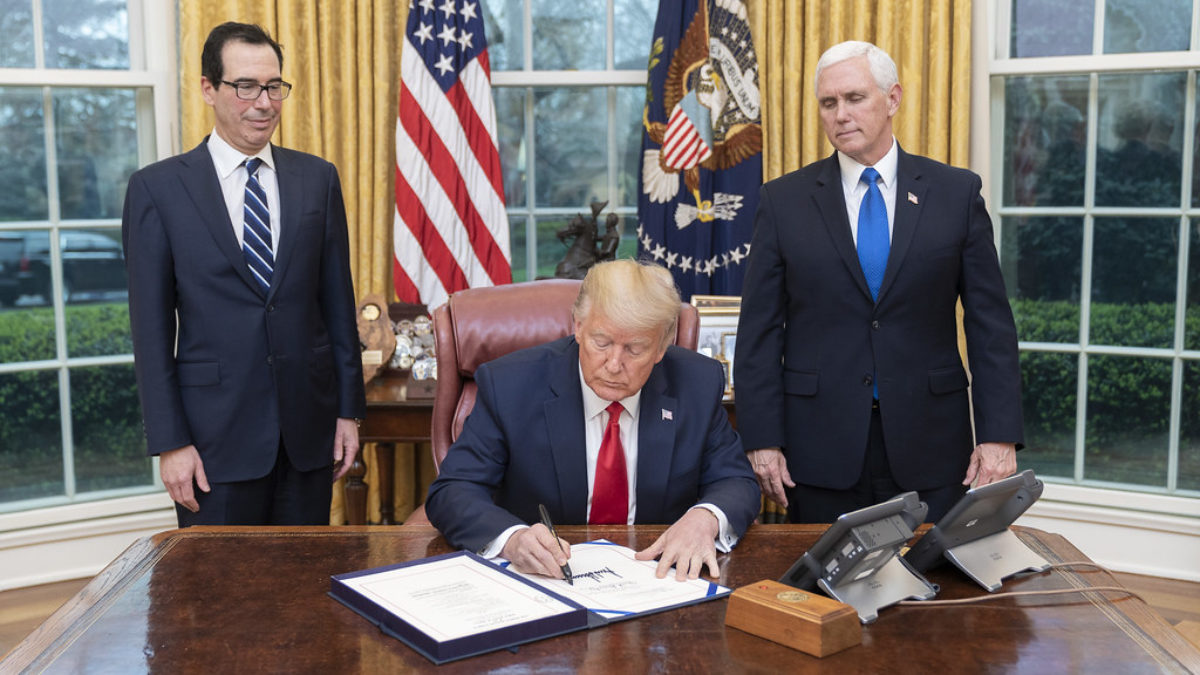
其实特朗普提高关税究竟有没有作用?肯定是有的,但是效果并没有那么好。主要是3点,第一是大家可以把货物中转第三国,这样出口就绕过被加关税的国家,最终会增加运输成本和时间成本,提升美国人的购买成本。第二点,美国本土并没有完全做好供应链内循环,制造业全球分工是几十年演变下来的,难以短期扭转局面,很多基础设施或工厂刚建好,可能4年就过去了,政策可能又要改变。第三点,出口国受到打击后,原材料价格也会上涨,因为大家都有预期,就是未来销量下降,所以单个价格大概率会上涨,最终还是老百姓接盘。举例来说,2016 年,也就是特朗普上任前夕,美国商品和服务贸易逆差总额为 4800 亿美元,约占美国 GDP 的 2.5%。尽管特朗普实施了关税,但到了 2020 年,逆差已增至 6530 亿美元,约占 GDP 的 3%。2018年,特朗普对进口钢铁征收25%的关税,以保护美国生产商。到2020年,美国钢铁行业的总就业人数为80,000人,仍低于2018年的84,000人。特朗普政府于2018年对中国进口的太阳能电池板征收30%的关税。美国商务部于 2023 年出示证据,证明中国太阳能电池板制造商已将其组装业务转移到马来西亚、泰国、柬埔寨和越南等国家,然后从这些国家将成品运往美国,从而有效地逃避了关税。所以,特朗普的举措,确实是杀敌一千,自损八百。但是,在这种情况下,我们还是要适应特朗普2.0时代的金融交易。贸易类货币、美元、比特币、贸易类股票等,都会有更大波动。

但是,澳洲本土不受国际贸易影响的股票,还在创出历史新高:Pro Medicus:今日创下 234.39 美元的历史新高。REA :股价达到每股 251.99 美元。JB Hi-Fi:价格达到 91.32 美元。澳洲航空:价格达到 9.05 美元。SGH Ltd(前身为Seven Group Holdings):触及49.57美元。Goodman Group:触及 38.35 美元。HMC Capital:已达到12.38美元。免责声明:GO Markets 分析师或外部发言人提供的信息基于其独立分析或个人经验。所表达的观点或交易风格仅代表其个人;并不代表 GO Markets 的观点或立场。联系方式:墨尔本 03 8658 0603悉尼 02 9188 0418中国地区(中文) 400 120 8537中国地区(英文) +248 4 671 903作者:Jacky Wang | GO Markets 亚洲投研部主管


热门话题
周五美盘强势收涨,市场迅速消化了之前CPI和鲍威尔鹰派讲话的利空,长牛框架依旧,AI板块经过英伟达财报考验,将继续保持上行趋势,并进一步助推核电板块上涨。本周美国GDP修正值和核心PCE物价指数等重大金融数据将影响市场走向。GDP预计保持不变,核心PCE有所反弹进一步推升12月降息预期,当然也对股市没有正面作用。

美股各大板块方面,特朗普交易依旧在发酵,比特币依然未冲上十万大关,相关股依然处于暴涨后的高位震荡。核能铀矿依然强势,部分核技术股继续暴涨,美铀ETF保持不跌,但国际铀价有所下行,目前核电技术股和铀矿股走势有一定差距,技术类涨幅更大。AI方面英伟达财报后继续回调,特斯拉收涨近4%回到$350以上,并有进一步上涨的趋势,C3继公布与微软合作后股价持续暴涨还在继续。美元指数大涨一度冲破108大关,黄金也大幅上行站稳2700平台,美元黄金双上涨的局面很难维系,但上周已经出现多日。早盘美元和黄金均有所回落,美股股指期货开盘就扩大涨幅。恐慌期货继续走低也符合预期,油价早间走稳。外汇方面美元的强势并未进一步压低澳元,澳美回到0.65之上并进一步上行,也符合中期预期。贵金属和能源价格的回暖也令澳元更为强势,澳日冲击101大关,本周新西兰预计降息50个基点,利率上限将来到4.25%跟澳大利亚持平,而后的进一步降息更将牵动澳联储的走向。免责声明:GO Markets 分析师或外部发言人提供的信息基于其独立分析或个人经验。所表达的观点或交易风格仅代表其个人;并不代表 GO Markets 的观点或立场。联系方式:墨尔本 03 8658 0603悉尼 02 9188 0418中国地区(中文) 400 120 8537中国地区(英文) +248 4 671 903作者:Xavier Zhang | GO Markets 高级分析师
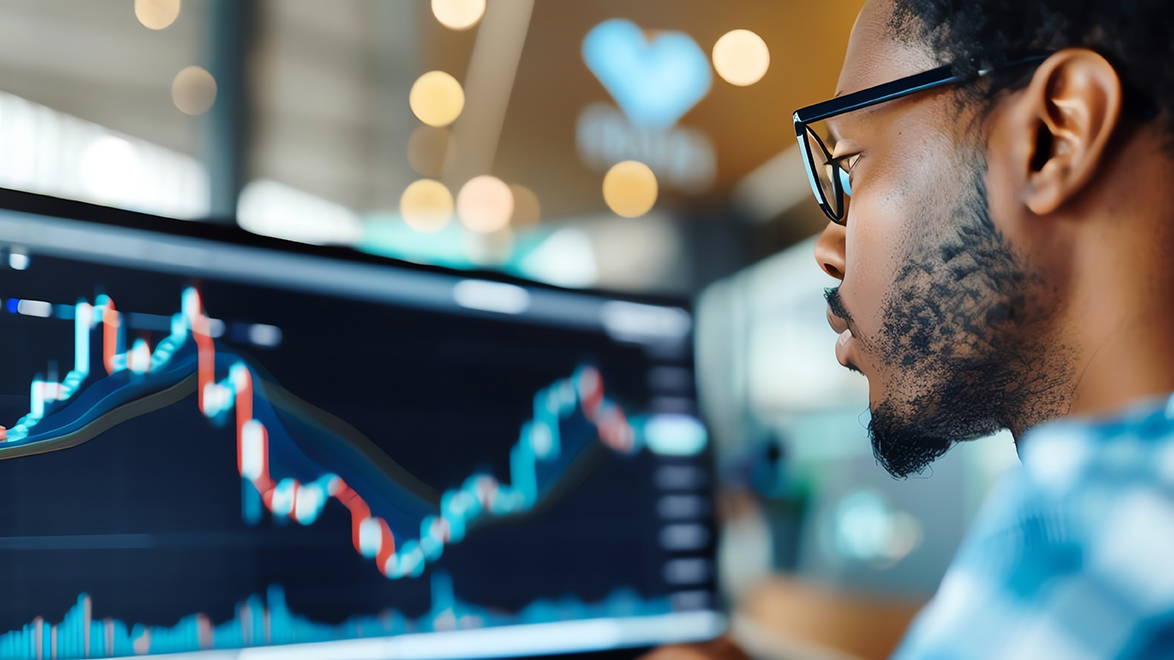

Introduction: Understanding the Impact of Entry Errors Trade entry is a critical moment that is undoubtedly contributory to the success or failure of a trade (although exits remain an additional key component of course). Whilst many traders focus much energy and effort on entries, the importance of a well-planned and so called ‘high probability entry’ is often underestimated. Poor entries can put traders at an immediate disadvantage, increasing risk exposure, reducing profit potential, and fostering a cycle of emotional and often questionable decision-making at this critical point of any trade.
This article delves into the most common entry mistakes traders make, why these errors occur, and, more importantly, how to avoid them. Many of these are insidious but if remain unchecked can lead to disappointment in trading outcomes, and at worst, may result in significant trading losses if they are not addressed over time. Through developing a greater understanding of the psychological pitfalls, potential technical missteps, and strategic errors made behind poor entries, traders can take actionable steps to enhance their consistency and performance in the markets.
Whether you're a beginner or an experienced trader, mastering your trade entry process can have a profound impact on your long-term trading outcomes and ultimate success or otherwise. The great news is that many of these are not “hard” fixes. Although by no means an exhaustive list, and often connected, these TEN errors in our experience appear to be the most common, Use these areas covered below as a checklist, making notes on any aspect that may resonate you’re your behaviour and of course subsequently take appropriate action as needed. #1.
Chasing Price Implications: Chasing price happens when traders enter impulsively after a sharp price movement in a particular direction. This is often driven by FOMO (Fear of Missing Out), and typically results in buying at overextended levels where a trend is already very established and may have almost run its logical technical course. This often results in a trade reversing or at best price exhaustion and little or no positive outcome over time.
Price reversal will often, even with the appropriate risk management in place result in repeated losses. Solutions: Develop a disciplined approach by waiting for either retracements to logical support levels, with of course evidence either of a bounce upwards, or even a breach of a new key level, or previous swing high (or low if “going short”). Either of these approaches may result in achieving a more favourable entry.
Also many trading platforms, including MT4 and MT% GO Markets platforms can use notification alerts to identify when the price reaches these levels, which is a useful feature that may assist in making sure robust decision-making occurs on a consistent basis. Additionally pending orders may also be used as part of your effective entry toolbox, set with more “cold” logic rather than being driven by emotional excitement of price velocity that may often be short-lived. #2. Ignoring Market Context Implications: Ignoring the broader market environment leads to trades that contradict prevailing trends or key market conditions.
T his oversight often results in entering trades with low probability, increasing the likelihood of stops being triggered. For long-term success, aligning trades with the dominant market forces is not only logical but appears from any research performed to be generally higher probability of at least some period of time where it is more likely that price will move in your desired direction. Failure to do so on a regular basis, can leave traders feeling like they're always on the wrong side of the market.
Example: A trader shorts the S&P 500 during a small pullback, not realising the index is in a strong uptrend on the daily chart. The pullback ends, and the uptrend resumes, quickly hitting the stop-loss. Solutions: Perform a multi-timeframe analysis before entering a trade.
Use higher timeframes (e.g., daily if trading an hourly timeframe) to understand the broader trend and ensure the trade aligns with it. Incorporate trend-following tools like moving averages or trendlines to validate entries is of course a common method to help substantiate this approach. #3. Over-Leveraging Positions Implications: Over-leveraging magnifies both potential profits and losses, but the latter can have devastating consequences.
Even small adverse price movements can wipe out significant portions of an account, leading to margin calls (and so taking “exit control” away from the trader) or even complete account depletion. This often traps traders in a cycle of "chasing losses," further compounding mistakes. Solutions: Implement strict position sizing rules.
For example, risk no more than 1-2% of your account on a single trade by adjusting your position size relative to your stop-loss distance. Your maximum ‘Risk per trade’ should be based on your Tolerable risk % of Account size per trade (e,g, 1%) x Entry price to Stop-loss distance. #4. Entering Without a Stop-Loss Implications: Trading without a stop-loss exposes traders to uncontrolled risk.
It fosters a dangerous mindset of "hoping" the market will work in their favour, often leading to mounting losses. A single large loss can undo months of profitable trading, shaking both confidence and capital and so have longer term psychological implications such as loss aversion, which can further distort good decision-making. Solutions: Use stop-loss orders based on logical technical levels, such as below a recent swing low.
Although less pertinent to entry but equally important through the life of a trade is potential use of trailing stops can also help lock in profits as the price moves favourably, protecting against reversals and of course profit targets based on logical potential technical pause or reversal points. #5. Over-Reliance on Indicators Implications: Indicators are helpful tools but are often misused when relied upon as the sole basis for trade decisions. Many indicators are lagging by nature, meaning they reflect past price movements rather than anticipating future ones.
Blind reliance on indicators can lead to late or false entries, especially in trending or volatile markets. Price action and associated volume should be treated as the primary decision making points with indicators used for confluence, Example: A trader buys a stock because RSI indicates oversold conditions, but the stock continues to decline as the market remains in a strong downtrend. Solutions: Combine indicators with price action and market context.
For example, use RSI or MACD as confirmation for setups rather than primary signals. Always validate indicator signals with chart patterns, price range within a specific candle, and/or key levels of support/resistance. #6. Trading News Events Implications: News events often create sharp volatility, which can lead to slippage, widened spreads, and unexpected losses.
Trading without a structured plan during (and arguably before) such events exposes traders to heightened risk, especially in fast-moving markets. Examples: A trader enters a position before a Federal Reserve announcement, expecting dovish remarks. Instead, hawkish comments cause a rapid market reversal, leading to a significant loss.
It is worth noting that it doesn’t even have to be an adverse announcement to that which was expected to disappoint. If one believes, as is often cited, that everything that is known or expected is already “priced in” then even an expected number or news release can fail to provide a potentially profitable price move. Also of course, equally as dangerous to capital is not to be aware of significant market events at all.
To enter prior to these from a place of ignorance that they are even happening is potentially as damaging to capital.. Solution: Use a trading calendar to track upcoming high-impact news events. If trading news is part of your strategy, place pending orders above and below key levels to capitalise on breakouts while controlling risk. #7.
Trading Impatience Implications: Entering trades prematurely often leads to setups that fail or require larger stop-losses to accommodate unnecessary volatility. This behaviour stems from a need to "be in the market," and this “itchy trigger finger” which is in essence a compromise of discipline arguably can increase the likelihood of losses. Example: A trader buys a stock before confirmation of a breakout, only to see the price reverse and remain in a sideways trend for a prolonged period of time not only failing to see that specific trade do well but also arguably adds opportunity risk as that money invested could be in a trade that has indeed set up to confirm a change of sentiment, Solution: Establish clear entry criteria and wait for confirmation, such as a candle closing above resistance.
Articulate these clearly and unambiguously within your trading plan, #8. Misjudging Risk-Reward Ratios Implications: Poor risk-reward ratios undermine profitability. Even with a high win rate, losses can quickly outweigh gains if the potential reward doesn't justify the risk.
Either a failure to have defined acceptable levels articulated within your plan or ignoring (based on previous price action) potential pause or reversal points are the two main causes. Example: A trader risks $500 to make $200 on a trade. Over several trades, a few losses wipe out multiple winning trades.
Solutions: Ensure a minimum risk-reward ratio is stated for example 2:1 before entering. For instance, if risking $100, target a profit of at least $200 to maintain positive expectancy. #9. Over-Trading Implications: Over-trading leads to increased transaction costs, emotional exhaustion, and reduced focus on high-quality setups.
This is often driven by revenge trading or overconfidence after a winning streak. Example: A trader takes several trades in a single session after a loss, compounding mistakes and ending the day with a larger drawdown. Solutions: Set a daily trade limit and focus on quality over quantity.
Use a trading journal to reflect on your trades and identify patterns of over-trading. #10. Ignoring Correlation Between Assets Implications: Trading multiple correlated assets amplifies risk, as adverse moves in one asset can lead to simultaneous losses across others. Hence, even if say a 2% maximum risk is assigned to a single trade, if trades are highly correlated then that risk is multiplied potentially by the number of trades open.
Example: A trader goes long on EUR/JPY, AUDJPY and GBP/JPY and a sharp JPY rally causes losses in all three positions. Solutions: Use correlation matrices to assess relationships between instruments and diversify by trading uncorrelated assets. For instance, balance a forex position with a commodity trade.
Summary: Trade entry mistakes are often rooted in a combination of emotional decision-making, poor planning or preparation, and over-reliance on tools or strategies without proper context. By identifying these common errors and implementing structured solutions, traders can greatly enhance their ability to execute high-quality trades. The key to success lies in discipline, patience, and a willingness to adapt and learn from mistakes.
Start reviewing your entry process today, be honest with any of the above that may resonate with you (As awareness is always the first step in improvement) and give yourself the chance to potentially transform your trading outcomes over time.


热门话题
最新数据显示,美国上周EIA原油库存意外增加54.5万桶,远超彭博社预期的减少62万桶,美国战略储备石油库存达到2022年11月18日当周以来最高。21日晚间,乌克兰基辅空军称俄罗斯首次从阿斯特拉罕地区发射了一枚洲际弹道导弹,消息一出,WTI石油和布伦特石油价格均短线上扬,战争不歇、油价不跌的逻辑再次得到强化。但是自从特朗普当选后,其执政风格使得市场上原油增产预期升温,油价一直处于承压状态。展望2025年,原油价格仍然可能受到供需关系挤压,但是我们认为,油价仍然是美元霸主的基础,油价很难跌破60美元/桶以下。

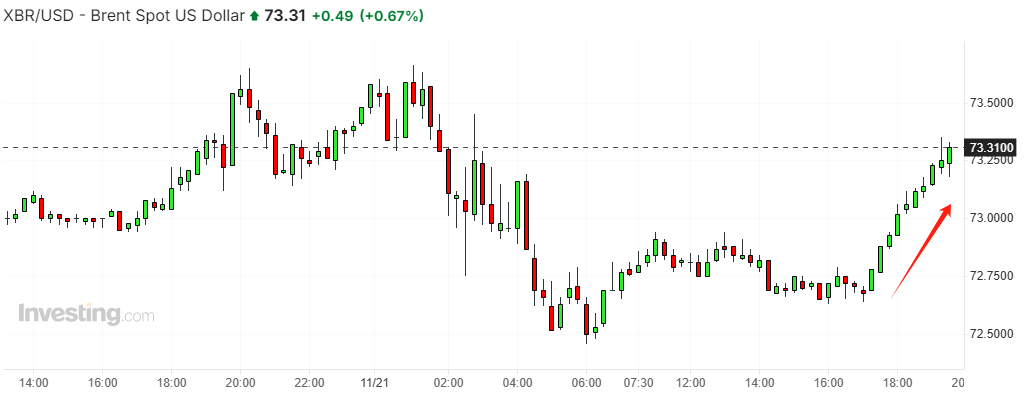
首先谈谈油价下行压力来源,就是众所周知的供需关系:一是供给侧扰动成为主导,地缘政治仍然。2025年能源市场的主要变动将来自供给侧,而需求相对平稳。当前原油价格的上行风险主要来自于中东地缘冲突,随着以色列对伊朗的打击目标由石油设施转向军事设施,这一风险边际在逐渐收窄。然而,如果OPEC+在12月转向增产,可能导致市场供过于求,布伦特原油价格或降至 60-70 美元/桶区间。二是OPEC+减产力度减弱,市场份额持续下滑。自 2022 年 10 月 OPEC+启动新一轮减产以来,其市场份额持续下降。截至 2024 年 9 月,OPEC+产量减少340 万桶/日,而非 OPEC+国家的产量增长 219 万桶/日,OPEC+市场份额由50.2%降至 46.5%,创下成立以来新低。同时,美国市场份额从 16.1%升至 17.5%。OPEC+的减产协议包括两部分:2023年 4 月宣布的每日 165 万桶减产延续至 2025 年底;2023 年 11 月宣布的每日 220 万桶减产已延续至 2024 年底,但未来走向尚不明朗。尽管如此,OPEC+内部减产执行力度减弱,部分成员国像阿联酋和伊拉克的实际产量高于配额,减产成效有限。在石油增长预期被下调及油价中枢下移的预期下,OPEC+延续现有减产协议可能是最优解。但是如果美国面临再通胀压力,特朗普可能施压中东国家增产,并放宽国内石油开采限制,进一步压低油价。

三是需求增速有限,供需平衡难以维持。2025年全球石油需求增长将大概率保持平稳,与全球经济增速密切相关。根据IMF 的预测,2024 年和 2025 年全球经济增速均为 3.2%。OPEC、IEA 和 EIA 分别预测 2025 年石油需求将增长 128 万桶/日,略高于 2024 年的123 万桶/日。同时,EIA 预计 2025 年非 OPEC+产量将增加 111 万桶/日,与石油需求增长接近。一旦 OPEC+转向增产,市场将面临更加供过于求的局面。四是市场对于特朗普执政促使俄乌停火的预期压低油价。特朗普可能通过谈判缓和俄乌冲突,进一步稳定俄罗斯石油出口。参照2017-2019 年特朗普任期内WTI 原油价格保持在50-60 美元/桶的低位,未来油价或将显著低于拜登任期内的 80 美元/桶水平。

然而,我们仍认为未来油价的跌幅是有限的,支撑油价的几个简单逻辑:第一,油价是石油美元全球霸权的基础。油价主要由三大石油交易所决定:伦敦洲际交易所(ICE)、纽约商品交易所(NYMEX)和迪拜商品交易所(DME)。其中,纽约商品交易所的WTI原油期货价格完全在美国的掌控之下。2023年,WTI原油与布伦特计价体系接轨后,伦敦洲际交易所的布伦特原油期货价格也被美国实质性掌控。同时,通过参股迪拜商品交易所,美国间接影响阿曼原油期货价格,实现对全球石油市场的深度干预。油价如果太低,打压到50美元/桶以下,甚至20-30美元/桶,将动摇石油美元全球强势的根基。第二,共和党有深厚的“石油血统”。如今的美国,是全球最大的石油生产国,也一度超过沙特成为全球最大的石油出口国,所以说, 美国打压油价就是削弱自己的执政基础和砸自己的饭碗。特朗普当选前就向石油产业界大亨争取10亿美元选举赞助,当选后更是提名石油大亨克里斯.赖特担任能源部长予以回报,油价太低,大佬们可能带头不答应。

第三,OPEC+会全力维护石油定价权,与美国展开激烈博弈。沙特依靠石油收入支撑“2030愿景”,实现财政平衡需油价接近95美元/桶;俄罗斯受战争与制裁影响,底线为65美元/桶。低于这一价位,俄罗斯难以支撑战争,沙特的经济转型也将受阻。65美元/桶是OPEC+的“生存线”。综上,2025 年能源市场将受供给侧影响,未来油价高低走向取决于OPEC+沙特、俄罗斯与美国斗争激烈程度,但总体来看,油价中枢下行中仍存在有力支撑,投资者要注意对冲风险。免责声明:GO Markets 分析师或外部发言人提供的信息基于其独立分析或个人经验。所表达的观点或交易风格仅代表其个人;并不代表 GO Markets 的观点或立场。联系方式:墨尔本 03 8658 0603悉尼 02 9188 0418中国地区(中文) 400 120 8537中国地区(英文) +248 4 671 903作者:Christine Li | GO Markets 墨尔本中文部


There's been plenty made this year about gold's incredible rise to new record levels. A point that gold bugs love to point out. As we sit here gold is trading at around US$2700oz having reached an all-time high that was just shy of US$2900oz.
Thus the question has to be asked: where is the limit? And where too from here for the inert metal? The movements over the last five years clearly suggest there is a structural change going on inside the very definition of what gold is. 14.7% in the last six months. 29.4% year to date. 34.2% in the last 12 months A staggering 82.3% in the last five years.
That is telling a story that is different to the original fundamentals we were taught at university and then as fundamental traders. Let's look at that theory: gold usually trades closely in line with interest rates, particularly US treasuries. As an asset that doesn't offer any yield it typically becomes less attractive to investors when interest rates are higher and usually more desirable when they fall.
That still technically holds true, However what has changed is how much central banks are interfering with that fundamental. Since 2022 when Russia invaded Ukraine one of the main reactions from the West was to freeze Russian central bank assets. Since that point the Russian central bank particularly has been buying gold as a form of asset store/reserve.
It has also allowed it to avoid the full force of financial sanctions placed on it. But they're not the only ones doing this; emerging market central banks have also stepped up their purchasing of gold since this sanction was put in place and are rapidly increasing their own central bank reserves. Then we look at developed markets central banks.
The likes of the US, France, Germany and Italy have gold holdings that make up to 70% of their reserves are net buyers in the current market. That suggests something else is afoot. Are they concerned about debt sustainability?
Considering the US has $35 trillion of borrowings which is approximately 124% of GDP, do central banks around the world see risk? Considering that many central banks have the bulk of their reserves in US treasuries coupled with the upcoming unconventional administration in the Oval Office this certainly puts gold’s safe haven status in another light. There are truly unknowns with the upcoming trump administration and gold is clear hedging play against potential geopolitical shocks, trade tensions, tariffs, a slowing global economy, deft defaults and even the Federal Reserve subordination risk So what is the outlook for Gold over the coming years and just how high could it go?
Consensus over the next four years is quite divided: by the end of 2024 the consensus is for gold to be at US$2650oz and then easing through 2025 to 2027 to $2475oz. However there are some that are calling for gold to reach the record reached in September this year before surging towards $2900oz the end of 2025 and holding at this level through most of 2026. And right now who could blame this prediction - Gold bugs believe the confidence in gold’s enduring appeal amid a volatile macroeconomic and geopolitical landscape is a bullish bet.
Expectations for sustained diversification and safe-haven flows do appear structural and with central banks and investors seeking to mitigate risks in an environment characterised by persistent uncertainty, geopolitical tensions, and economic volatility. And it's more than just the demand side that's leading the charge. The supply side of the equation further supports our bullish outlook.
Gold mine production is inherently slow to respond to rising prices due to long lead times for exploration, development, and production ramp-up. Furthermore, major producers avoid aggressive hedging strategies, as shareholders typically prefer full exposure to gold’s upside potential. The supportive fundamental backdrop reinforces that demand from both the official sector and consumers will remain robust, while supply-side constraints provide a natural tailwind for price appreciation.
What we as traders need to be aware of is many investors actually believe they've missed the rally and are wary of buying gold at all-time highs. There are some that believe gold is due pull back even a correction as they struggle to make sense of gold in the new world. The divergence away from yields coupled with unknowns out of China and the US has made them nervous to buy this rally.
But we would argue the pullback has probably already happened. If we look at the gold chart, since the US presidential election gold has moved through quite a reasonable downside shift. Dropping from its record all time high to a low $2530oz.
That decline has clearly been cauterised and the momentum now is clearly to the upside. We can see from the chart that spot prices are now testing the September-October consolidation period. Any clean break above these levels would see it going back to testing the head and shoulders pattern at the end of October-November.
This will be the keys to gold for the rest of 2024. But whatever happens in the short term the long-term trend suggests there is more for the gold bugs to delight in.
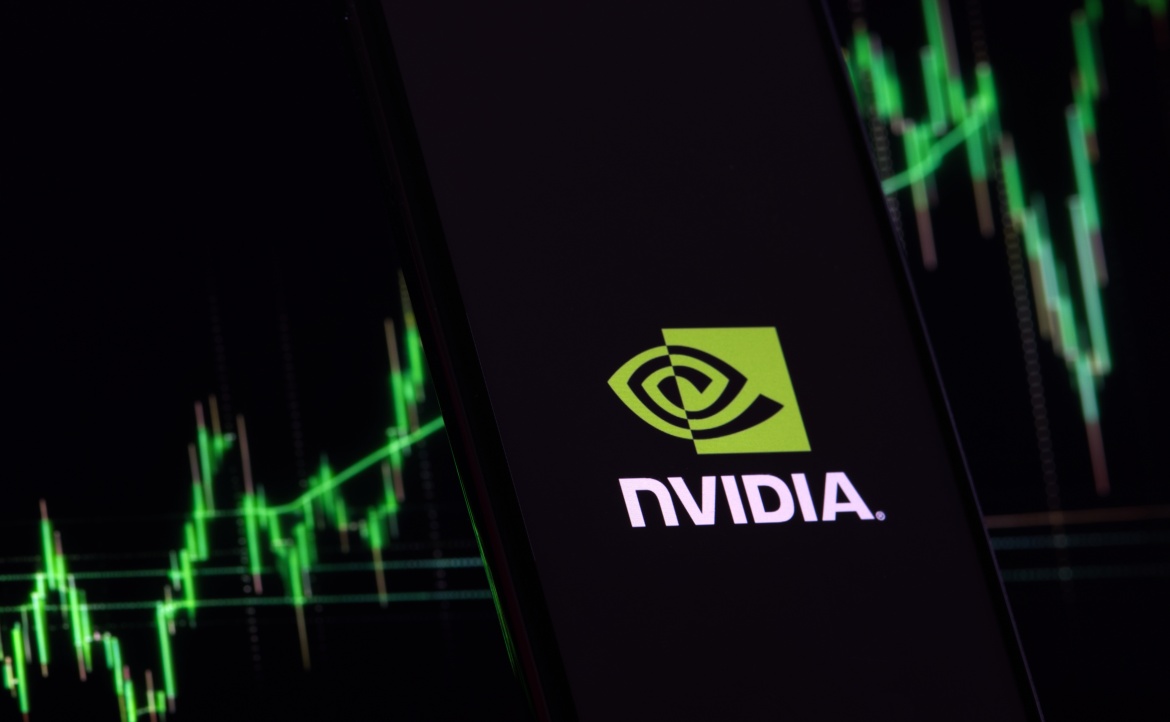

热门话题
11月20日盘后,英伟达(NVIDIA)发布了备受关注的2025财年第三季度财报。公司再次交出亮眼成绩单,营收和盈利均超市场预期。然而,尽管数据优异,这次市场反应却显得冷淡,收跌将近0.8%,但盘后股价一度下跌4%以上。那我们今天的文章就是来多角度看一下英伟达这次财报透露出的信息和这种现象发生的原因。
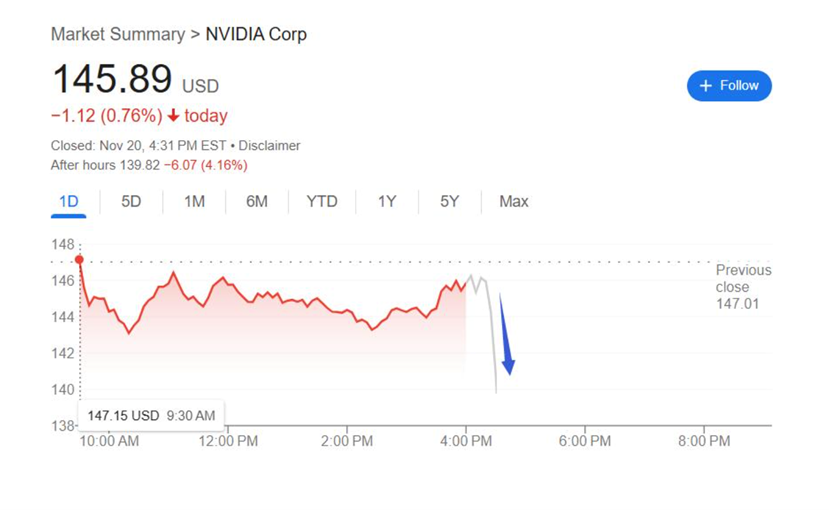
首先根据财报数据,英伟达第三季度营收达到351亿美元,同比增长17%,超出市场预期的347亿美元。净利润则同比激增至193.12亿美元,反映出其强大的盈利能力。数据中心业务成为增长主力,收入高达308亿美元,同比增长112%,这一表现再次巩固了英伟达在AI芯片市场的领导地位。游戏业务方面,营收达33亿美元,显示出稳定的市场需求。此外,英伟达的毛利率高达74.6%,刷新了历史记录,这得益于其高端AI芯片的定价策略和强劲需求。然而,公司也警告称,供应链瓶颈可能会在未来几个季度影响Hopper和Blackwell芯片的供应,这一消息的发出也导致市场对这次超出预期的财报并没有过于热情的反应。

所以我们看到英伟达的股价在盘后交易中下跌4%以上,这也反映出投资者的复杂情绪。那么我们认为以下几个因素可能导致这一反应:高估值的压力英伟达当前市值接近1万亿美元,其股价已经包含了市场对未来增长的高度预期。尽管Q3财报超预期,但与上一季度的爆发式增长相比,增速明显放缓,投资者担忧这种趋势可能成为常态。供应链隐忧英伟达在电话会议中提到,Blackwell芯片的出货将在2025财年第四季度开始,但供应链限制可能持续至2026年。这一消息增加了投资者对公司未来营收增长的不确定性。短期业绩压力尽管数据中心业务表现强劲,但市场对未来几个季度的增长路径表现出谨慎态度。部分分析师认为,市场已经透支了对英伟达短期增长的预期,投资者期待看到更多新的增长点。尽管这次盘后的反应并不强烈,但是在人工智能浪潮下,英伟达仍然是最大的受益者之一。公司Hopper和Blackwell系列芯片的强劲需求,以及AI技术在更多行业的应用扩展,为其未来增长提供了坚实基础,比如我们所熟知的花旗银行就上调了英伟达2025财年、2026财年和2027财年的EPS预期,并把目标股价从150美元上调至170美元。
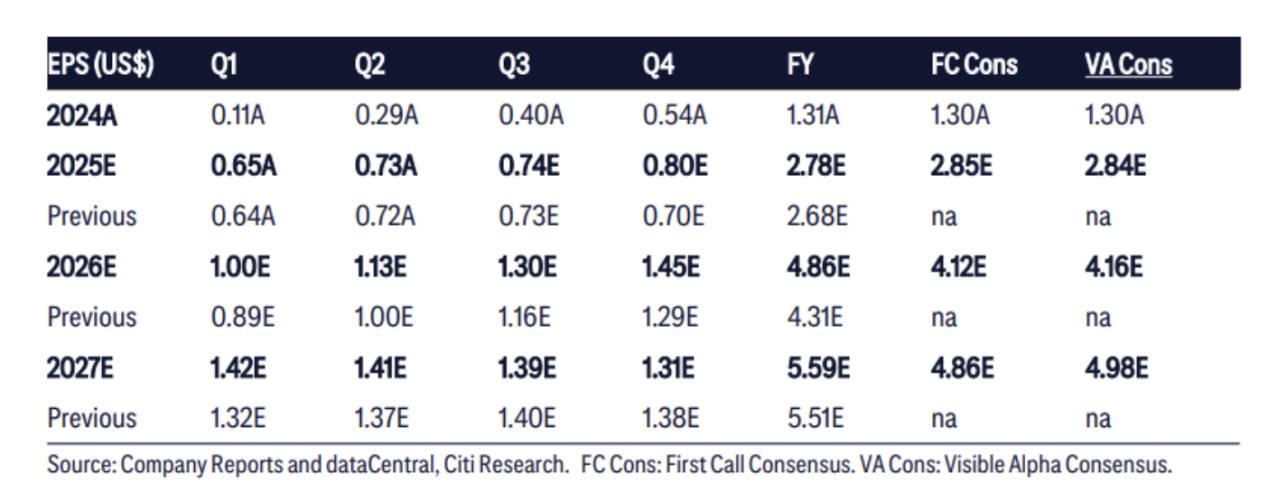
并且根据期权市场的数据我们会发现市场对英伟达财报的反应比对下月的非农、CPI和FOMC利率决议更为敏感,表明英伟达财报对市场(比如S&P500)的影响可能超过其他比较重大的经济事件了,这也表明英伟达的市场地位已经不容小觑。当然除此英伟达也在面临一些挑战:首先是面临的竞争压力,随着AMD、谷歌和亚马逊等巨头加速布局AI芯片市场,英伟达需要不断创新以维持其领先地位。此外,竞争对手在价格和性能上的追赶可能会对英伟达的市场份额和定价策略构成威胁。而放眼全球的宏观经济,全球经济增速放缓和高通胀可能压制企业对AI基础设施的投资,尤其是在利率高企的背景下。英伟达的增长依赖于数据中心和云计算领域的持续扩张,而宏观经济环境的不确定性可能对其增长产生拖累。以及我们前面提到过的供应链压力都可能在不同程度上影响英伟达未来的表现。

总体来说,这次英伟达的Q3财报再次证明了其在AI和芯片领域的强劲实力,但市场对其未来增长路径的期望已达极高水平,在高估值的背景下,短期的增速放缓和供应链隐忧成为压制股价的重要因素。未来,英伟达需要在技术创新、供应链优化和市场拓展方面继续发力才能保持行业领先地位。同时,投资者也是需要关注全球宏观经济环境、竞争格局变化以及AI技术的应用拓展,这些都将成为影响英伟达股价和增长的重要变量。当然了,我们还是认为无论是短期调整还是长期潜力,英伟达作为芯片界的领头老大,未来很长一段时间仍将是全球科技行业的风向标之一。免责声明:GO Markets 分析师或外部发言人提供的信息基于其独立分析或个人经验。所表达的观点或交易风格仅代表其个人;并不代表 GO Markets 的观点或立场。联系方式:墨尔本 03 8658 0603悉尼 02 9188 0418中国地区(中文) 400 120 8537中国地区(英文) +248 4 671 903作者:Yoyo Ma | GO Markets 墨尔本中文部

